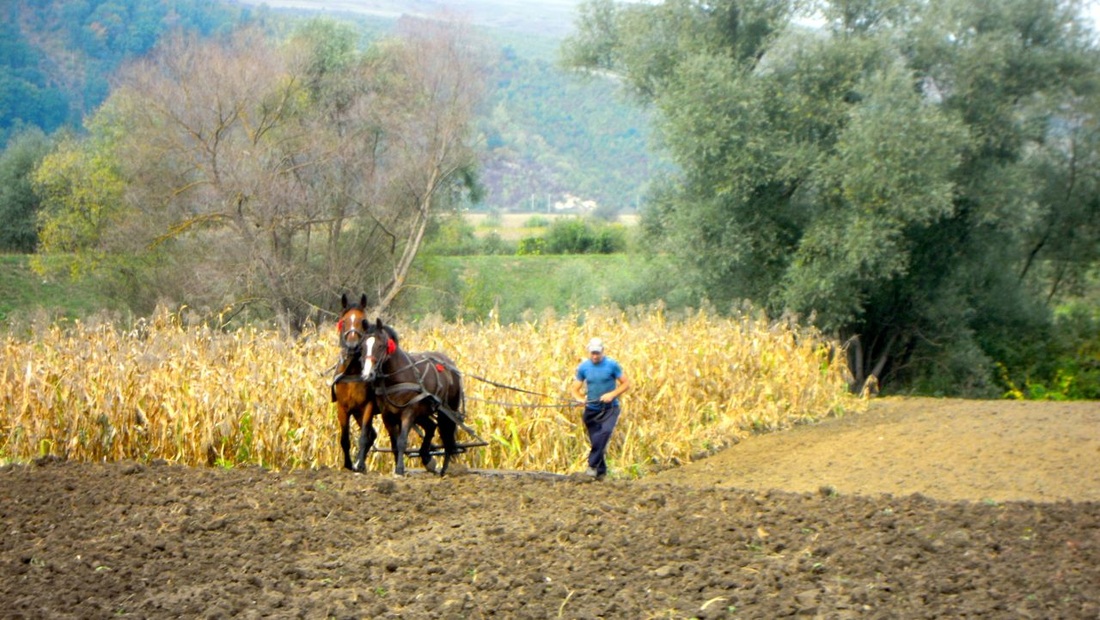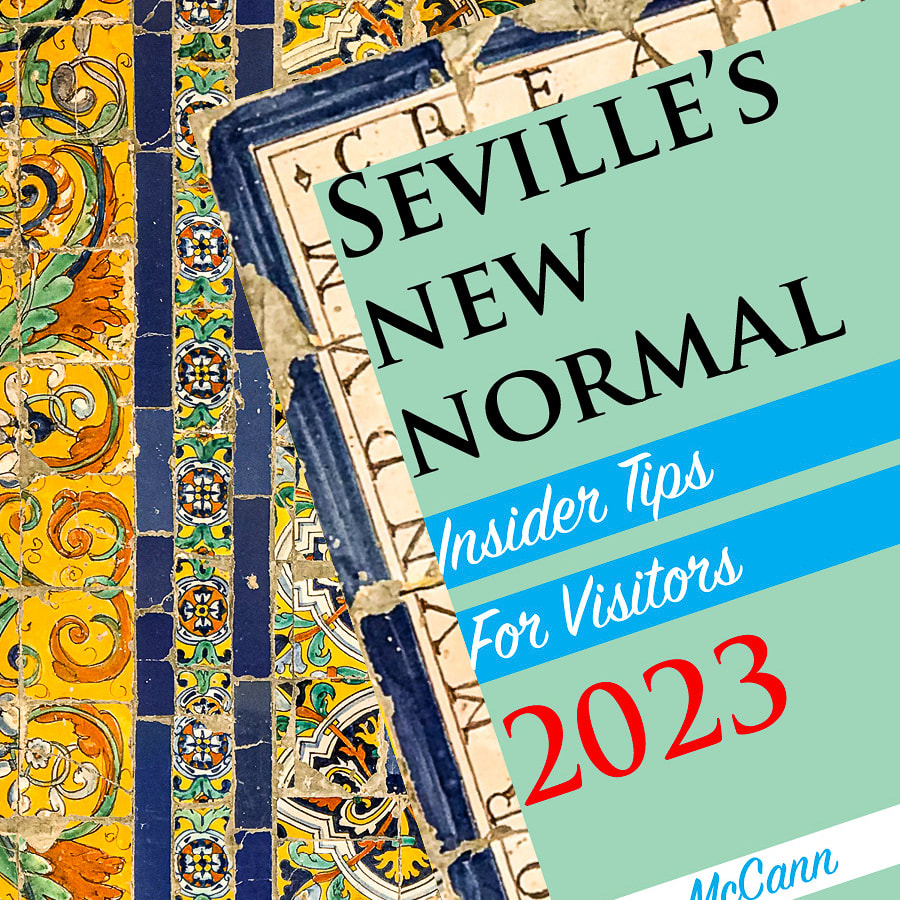 NASA’s rocket scientists have finally caught on to something that Spanish grandmothers have been saying for centuries: Siestas are good for you. “A recent NASA study showed that when pilots were allowed to take a nap for 26 minutes during their working hours, their efficiency increased by 34 per cent,” the Telegraph reported last week. This was cause for jubilation in our household, as Rich and I – both serious siesta fans – have spent years defending the habit to American friends who insist on referring to it as our “nap,” as if we were four, or ninety, or just hopeless slackers. Siestas are sensible in hot climates like Seville’s. But more than that, I love the way they shape the rhythm of my day: it’s like having 14 mornings a week. And as if 34% more efficiency and a daily feel-good experience weren’t enough, there’s evidence that suggests siestas reduce the chance of a fatal heart attack by 37%. And a National Institute of Mental Health study showed that siestas can also reverse information overload and prevent burnout.  Is your job is too demanding to allow time for a siesta? Consider some of the overachievers known for fitting in a daytime snooze: Charlemagne, Napoleon Bonaparte, Thomas Edison, John D. Rockefeller, Winston Churchill, Eleanor Roosevelt, John F. Kennedy, and Bill Clinton, to name but a few. “You must sleep sometime between lunch and dinner, and no half-way measures,” advised Winston Churchill. “Take off all of your clothes and get into bed. That’s what I always do.” If he could squeeze a nap into a day when his top agenda item was defeating Adolf Hitler, maybe you can, too. In reporting on a new study involving eating and sleeping schedules, a recent Huffington Post article commented that “the French excel at the two leisure activities, spending more time at table and in bed than many other nations.” When did eating and sleeping become leisure activities instead of life essentials? Have we learned nothing from NASA, Churchill, and the Spanish grandmothers? Sleep isn’t a form of recreation or weakness, it’s how you keep your mind sharp and your body fit for whatever else you’ve got planned for the day.  So how can you manage a siesta in today’s busy workplace? For a start, try calling it a power nap, and mention to co-workers that Albert Einstein did a lot of napping while coming up with his theory of relativity. Next, find a quiet spot, preferably one in which you can close the door, switch off lights and phones, and be undisturbed for half an hour. Set an alarm so you don’t worry about oversleeping. Get as comfortable as possible in a couch or padded chair. And with apologies to Mr. Churchill, I don’t recommend taking off all your clothes; save that kind of behavior for when you’re already established as an eccentric and a leader of the free world. Wrap up in a coat or light blanket, as body temperatures drop during sleep. Read something light (nothing for work!) and when your eyelids feel heavy, let yourself drift off...  The Spanish recommend sleeping about twenty minutes; dozing for two or three times that long can leave you groggy. If so, you’ll find the Spanish merienda, an afternoon snack of coffee and cake, will get those eyelids wide open again. Even without the caffeine and sugar rush, I find a siesta leaves me feeling refreshed and alert. And contrary to some popular myths, it actually helps me sleep more deeply at night, too. My agenda may not require exploring the frontiers of space, defeating the Nazis, or figuring out the space-time continuum, but I count on my siestas to make me more efficient and less likely to suffer burnout, stress, or a fatal heart attack. And they’re fun. To me, that’s worth 20 minutes any day.
11 Comments
I’m often gobsmacked by the health advice I’m offered by Spanish health care professionals. High cholesterol? Consume more dark chocolate, red wine, and good Spanish ham. Taking cold medicine? No orange juice for you! Your prescription says avoid alcohol? Oh, go on, two or three beers won’t matter. Obviously, this kind of health advice is easy to follow, and to be honest, I’ve had pretty good results with it so far. My American doctor decided I didn’t need cholesterol medication after all, and I’ve found it is easier to survive a cold sipping the occasional beer instead of guzzling OJ. So when I read recently that Spanish health care experts are recommending five meals a day to stay thin, I went to the kitchen, got a snack, and settled down to give the article proper attention. MujerHoy magazine explained that you need breakfast, mid-morning snack, lunch, mid-afternoon snack, and dinner to avoid overeating at any one meal. “To lose this traditional schedule,” the article warned, “is to throw open the doors to indiscriminate nibbling.” Yikes! Our best bet, it seems, it to spend more time at table, eating slowly in a relaxed manner, so our brains and our bodies have time to appreciate the meal and realize that we’ve consumed enough nutrition to make it through the next few hours until it’s time to eat again. The article reported, in a tone verging on horror, that while the Spanish continue to spend a civilized 1 hour and 45 minutes a day at meals, those crazy Americans allot just 50 minutes daily to the pleasures of the table – which may not involve a table at all, but rather a car, a work station, or even (shudder) walking. I was shocked to discover that Americans aren’t the worst offenders. According to the Daily Mail, in the UK mealtimes account for just 39 minutes and 9 seconds of the average day. Breakfast is a brisk 7 minutes and 20 seconds, “lunch hour” has now been whittled down to a measly 12 minutes and 49 seconds at your desk, and dinner is gulped in just 19 minutes. Not surprisingly, 78% of participants said they wished they could sit down and savor meals longer, and 90% said (rather wistfully, it seemed to me) that on the rare occasions they managed a proper dinner with the family, they enjoyed themselves and wished they could do it more often. The headlong pace of modern living makes it difficult to fit in three meals a day, let alone five. But traveling lets you try all sorts of new things, including ways to fuel body and soul. So you might consider an experiment during your next vacation: try eating more and smaller meals, and lingering at the table as long as possible. When Rich and I were on our recent three month train trip, we generally had five meals a day, making sure we had sufficient morning and afternoon snacks to sustain us during many hours of walking. We sampled plenty of local fare but at other times we opted for simple salads or picnics rather than chowing down on big restaurant meals. We were never hungry and came home leaner than we left. The Spanish aren’t the only ones who have developed the fine art of leisurely meals. The Huffington Post reported that the French spend two hours a day at the table. And according to Mireille Guiliano's bestseller French Women Don’t Get Fat, they're eating all the good stuff we're told to deny ourselves when trying to slim down: chocolate, cheese, meat, bread, even (gasp!) butter. So why don’t they get fat? In large part because les Français take pleasure in three full, leisurely meals every day plus snacks. And they treat food as a friend, rather than an enemy. “French women,” says Guiliano, “think about good things to eat; American women typically worry about bad things to eat.” When I asked a French friend about this over coffee today, she said, “It’s true. We look forward to eating with the same pleasure that we look forward to meeting a good friend.” And that, my friends, seems like something worth doing as often as possible. Bon appétit! I have this vivid memory of a night in a Kenyan village, where Rich and I had gone with a friend from an NGO to sort out a project providing food for orphans. It had taken us days to get there, and all three of us were hot, tired, and a trifle preoccupied with our digestive systems, which had been sorely tried by various strange meals along the way. One of the village’s scrawny hens had been sacrificed to make us a stew, and when the cook dished up our portions, my friend looked down into her dinner bowl and discovered the whole head of the chicken staring back at her. Ever since then, when I hear people talking about wanting to have “authentic travel experiences,” I remember the look of horror on my friend’s face and think, “Be careful what you wish for...” Journeys come in all shapes, sizes, and degrees of discomfort. If you Google “authentic travel,” you’ll get 242 million hits ranging from cookie-cutter package tours to blog posts bemoaning the fact that the younger generation is going to have to work a lot harder to find the road less traveled. So just what do we mean by “authentic travel experiences,” and why is everyone so keen to have them? Back when long-distance travel was slower, more expensive, and less common, it seemed enough of an achievement just to arrive someplace as exotic as France and see the Mona Lisa and the Eiffel Tower with your own eyes. But with today’s cheap airfares and abundant online travel information, many places far more remote than Paris are flooded with international visitors. This gives us the uncomfortable sensation of being one of the herd. We don’t want to feel like tourists; we want to feel like explorers. We don’t want simply to see foreign people and places; we want to connect with them. But what does that look like, exactly? In Thailand, Rich and I once spent a week among the hill tribes, sleeping in bamboo huts, washing in streams, and watching people make flour by pounding grain with rocks. One night, a villager returned from an arduous climb down the mountain carrying a car battery, which he’d recharged someplace and now connected to a black-and-white TV. The entire village gathered to watch an old sitcom they managed to pick up for half an hour. Some of our fellow travelers grumbled that this destroyed the purity of the experience. But I suspect the villagers had gone to considerable trouble to make sure the TV viewing coincided with our visit. They wanted to show us their modern side. They wanted to connect with us. So what is an “authentic travel experience?” I believe it’s one that surprises us, overthrows our preconceptions about a place, and shows us something of the character of the people who live there. And for that to happen, we need to take people as we find them, not as we wish them to be. Last fall in Romania I saw a young man with a horse and plough tilling a field that had been in use for 800 years. Was his labor less impressive or the scene less charming because he was wearing sweatpants rather than homespun clothing? I didn’t think so. But that’s me. Authentic doesn’t mean the past; it means real. And real life doesn’t come in tidy packages with perfectly coordinated accessories. If you want seamless perfection, you’re going to wind up with fake huts and costumed hirelings in an open-air museum. Reality is lots messier, full of jarring notes like sweatpants and TVs and chicken heads in the stew, but it’s infinitely more interesting and more memorable. Have you had travel experiences that struck you as particularly authentic or appallingly fake? I’d love to hear about them in the comments below.  It wasn’t the Full Monty, but it was close. When Seville’s firefighters decided to perform el streaptease in last Friday's protest at City Hall, they peeled off their uniforms, piece by piece, until, as the newspaper ABC put it, “the boys showed everything except the hose.” As a soundtrack, they chose the popular song Chupa la Gamba (Lick the Shrimp), which includes slurping noises along with the lively beat. Seville firefighters are known for their creative dissent style, and the recent Near Monty, voicing opposition to austerity cuts they say will sabotage their effectiveness, was one of their best in years. Sevillanos love to express their outrage and enjoy a bit of fun at the same time. The typical protest is leisurely and sociable. Participants usually gather “very early,” around 9:00 in the morning, parade the streets for an hour or so, stop for coffee at 10:30, resume 11-ish, break for lunch at 1:30, and after that they call it a day. When sterner measures are deemed necessary, they put up tents in front of City Hall and camp out for days, sitting around on folding chairs drinking beer and chatting with likeminded friends for hours on end.  General strike, November 14, 2012 General strike, November 14, 2012 During national crises, Seville rises to the occasion in its own unique way. Take the general strike on November 14, 2012, called throughout Spain to protest government reforms making it less expensive for employers to fire workers. In a show of solidarity, most Seville businesses and smaller stores closed, and unions and other political organizations roamed the streets with signs, flags, and noisemakers. While protests turned ugly in some cities, Seville enjoyed a holiday atmosphere. Those who weren’t protesting took advantage of the time off to go shopping downtown. When demonstrators would show up to heckle a store, the manager would prudently shut the doors for a few minutes until the protesters moved on, then the doors would reopen, and shoppers would continue browsing the sale racks and discussing where they should go for lunch. Every Spaniard I talked to agreed the general strike would change absolutely nothing; mainly it was a way to vent the national frustration with the economic crisis. Many feared inflammatory images in the media would discourage tourists, devastating the economy still further. A friend in the travel industry told me, “If there is even one article in the international press about a street riot in Seville, I am out of business.”  Photo by Samuel Aranda for The New York Times Photo by Samuel Aranda for The New York Times Seven weeks earlier the New York Times had published a photo of a man dumpster diving in Spain, along with an article called Spain Recoils as Its Hungry Forage Trash Bins for a Next Meal. The photo went viral, and I received alarmed emails from friends and relatives all over America asking if Rich and I were frightened, and if/when we were thinking of returning to the US to live. I wrote back explaining that no, we weren’t frightened, any more than they were frightened living in cities such as New York and San Francisco, where dumpster dining is a way of life for many thousands of Americans, especially in these tough economic times. It’s easy to become alarmed at reports about other parts of the world, especially when you can’t balance them against the full social context. No one wants to take foolish chances wandering into danger zones, but we also don’t want to overreact to the situation or fall victim to an overzealous reporter putting an alarming spin on the facts. When in doubt, I check the US State Department travel website, which is, if anything, overly quick to issue warnings and alerts. If you’re planning to visit Seville any time soon, you’ll be glad to hear that the State Department can’t find a single worrying thing to say about Spain, beyond the usual warnings about pickpockets, etc. The bad news is, you’ve already missed the firefighters disrobing in the main plaza to Chupa la Gamba. But don’t worry, I’m sure plans are already underway for even more creative protests. And who knows, maybe next time, they’ll go the Full Monty. |
This blog is a promotion-free zone.
As my regular readers know, I never get free or discounted goods or services for mentioning anything on this blog (or anywhere else). I only write about things I find interesting and/or useful. I'm an American travel writer living in California and Seville, Spain. I travel the world seeking eccentric people, quirky places, and outrageously delicious food so I can have the fun of writing about them here.
My current project is OUT TO LUNCH IN SAN FRANCISCO. Don't miss out! SIGN UP HERE to be notified when I publish new posts. Planning a trip?
Use the search box below to find out about other places I've written about. Winner of the 2023 Firebird Book Award for Travel
#1 Amazon Bestseller in Tourist Destinations, Travel Tips, Gastronomy Essays, and Senior Travel
BLOG ARCHIVES
July 2024
CATEGORIES
All
|















